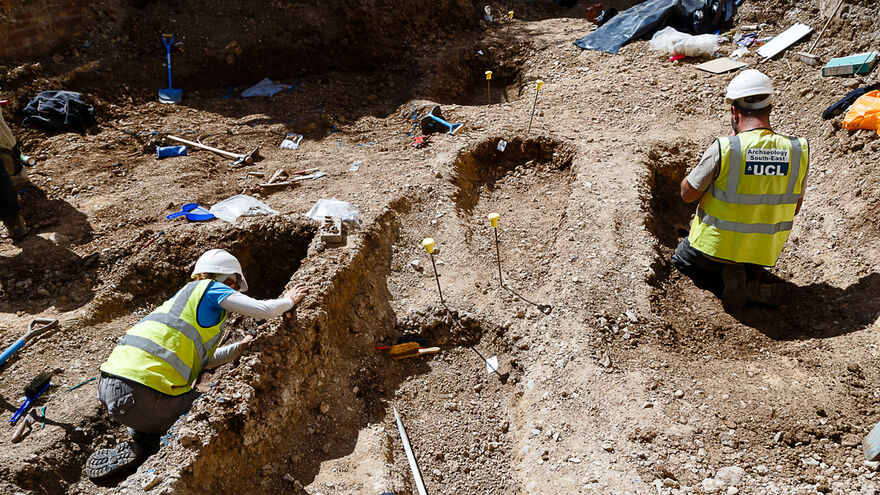
Videos: Meet the Archaeologists helping us uncover our rich history
WW1 letters and a 200-year-old Quaker burial ground were among last year’s exciting discoveries during our redevelopment work at the Studio Theatre and Corn Exchange. We caught up with the team at Archaeology South East to find out more about what they have learned from their post-excavation assessments:
“This wouldn’t really go along with the picture of what we think about the Quakers 200 years ago” Dr Paola Ponce, Archaeology South East
After exhuming, cleaning and assessing the remains discovered at the Quaker Burial site, Archaeology South East share some interesting findings that give an insight into the health and likely lifestyles of the individuals. Some findings support typical associations with the Quaker faith , such as the burials being modest, unadorned and uniform. But others show a different, more surprising side - one that suggests evidence of wealth and excess.
Find out more about the process and initial discovery of the burial site, or look through our pictures of the archaeologists discovering the burials on-site.
Whilst it is known that the Royal Pavilion Estate was used as a military hospital during the First World War, discoveries of letters and ephemera give us a closer look at what life was actually like for the individuals who stayed there. Dr Michael Shapland gives an insight into how these findings – which included matchboxes, cigarette packets, bottles and newspapers - can help us construct a narrative about this unique episode in the Estate’s history and, poignantly, bring the soldiers to life.
Read more about the content and photographs of the letters.
Take a look at our latest building works update.
